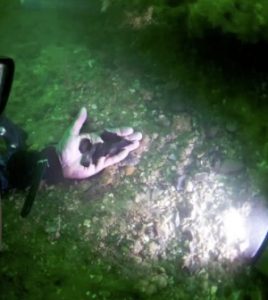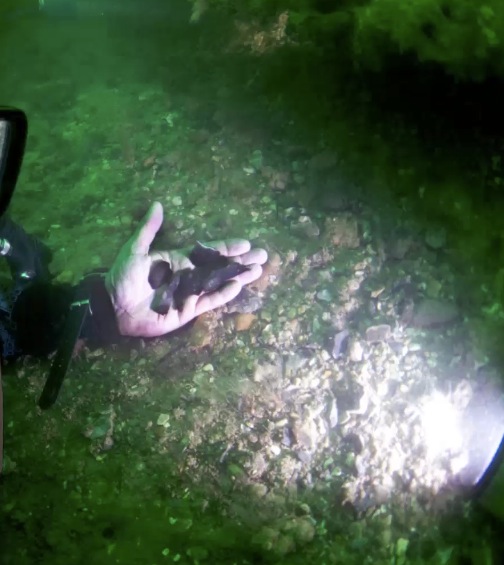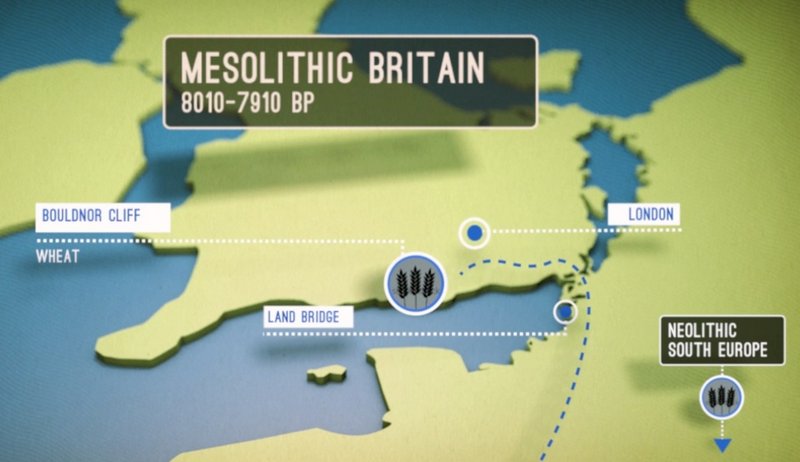
Analysis of sedimentary ancient DNA from an underwater site off the southern coast of Britain suggests, according to a U.K research team, that Mesolithic hunter-gatherers who occupied a site now underwater traded in a Near Eastern strain of wheat 2,000 years before the currently generally-accepted advent of farming in Britain.
“The first evidence of cereal cultivation on what is now mainland Britain dates back only to about 6,000 years ago, suggesting a substantial temporal gap between the two sides of the English Channel,” wrote University of Oxford’s Greger Larson in a perspective article published about the finding in Science magazine.** Larson is Director of the Palaeogenomics & Bio-Archaeology Research Network Research Laboratory for Archaeology and the History of Art. It is generally thought that farming began in Europe, south and west of the English Channel, much earlier than in the British Isles. He goes on to summarize the process and merits of the recently completed study by a team of U.K. scientists led by Oliver Smith of the University of Warwick that suggests the presence of not just wheat, but a Near Eastern strain of wheat, within 8,000-year-old submerged paleosol sediments at Bouldnor Cliff off the Isle of Wight in the English Channel.
Smith and colleagues teased DNA from core samples taken from a Mesolithic paleosol layer just beneath a peat layer sealed beneath silty-clay submerged alluvial sediments. Millennia ago, this paleosol layer was above ground, an ancient landscape that was gradually submerged as sea levels rose during the warming period beginning in the early Holocene epoch. The sea level change inundated the land bridge between what is today Britain and the rest of Europe, creating the English Channel. The researchers uncovered evidence of human occupation typical of Mesolithic hunter-gatherers at the site, which included worked wood, burnt flint and hazelnut shells.
“The site has been dated to 8030 to 7980 calendar (cal) yr B.P.,” wrote Smith, et al. in their report, “placing it in the late Mesolithic of the British Isles, a period that is represented by few assemblages and is still little understood………The sedaDNA [sedimentary ancient DNA] profile revealed a wooded landscape that included oak, poplar, apple, and beech family members, with grasses and a few herbs present.”*
_________________________________________
 Diver shows sample of finds unearthed at the marine site of Bouldnor Cliff. From the video describing the research findings in the paper titled “Sedimentary DNA from a submerged site reveals wheat in the British Isles 8,000 years ago”. Credit: University of Warwick
Diver shows sample of finds unearthed at the marine site of Bouldnor Cliff. From the video describing the research findings in the paper titled “Sedimentary DNA from a submerged site reveals wheat in the British Isles 8,000 years ago”. Credit: University of Warwick
_______________________________________
But the most startling finding came from the DNA analysis. Through meticulous analysis accounting for and dismissing possible contamination as well as potential intrusion from other upper layers, they discovered clear DNA traces of Near Eastern strains of wheat genuinely dated to and associated within the context of the Mesolithic assemblage, which also included evidence of a Mesolithic human diet.
“The occurrence of wheat 8,000 years ago on the British continental shelf appears early, given its later establishment on the UK mainland,” wrote Smith, et al., “Neolithic assemblages first appear in northwest Europe in the 8th millennium B.P., from 7500 B.P. in the central Rhineland, 7300 B.P. in the Rhine/Maas delta and adjacent areas, and 7400 B.P. in western France.”*
The DNA results thus suggest the presence of wheat at Bouldnor Cliff about 400 years before the earliest known occurrences of farming in northwestern Europe, and 2,000 years before agriculture is known to have taken hold in what is today Britain.
The researchers found no evidence that the wheat had actually been cultivated at or near the site. Instead, they suggest, the wheat was likely traded into the area by a network established between hunter-gatherers at Bouldnor Cliff and Neolithic farmers further south and west in Europe.
“We suspect that this wheat represents foodstuffs imported from the continent rather than the cultivation of this cereal crop at this locale. The presence of wheat, along with pioneering technological artifacts at the site, provides evidence for a social network between well-developed Mesolithic peoples of northwest Europe and the advancing Neolithic front,” conclude Smith, et al., suggesting the agricultural products moved ahead of their actual cultivation in Britain.*
_____________________________________
 Above: From the video describing the research findings in the paper titled “Sedimentary DNA from a submerged site reveals wheat in the British Isles 8,000 years ago”. Credit: University of Warwick
Above: From the video describing the research findings in the paper titled “Sedimentary DNA from a submerged site reveals wheat in the British Isles 8,000 years ago”. Credit: University of Warwick
____________________________________
Although the predominant thinking among scholars places the advent of the farming Neolithic in what is today Britain by 6000 years BPE, the timing and mode of Neolithization is still debated. One model suggests the arrival of Neolithic farming technologies on the mainland was rapid, facilitated by the arrival of migrating farmers from the rest of Europe, displacing or acculturating the indigenous hunter-gatherers; the other proposes that hunter-gatherers gradually transitioned to a Neolithic economy, with increasing dependency on cereals over thousands of years.
The study has important implications in the ongoing research on the evolution of agriculture in Europe. “The unexpectedly early appearance of wheat in Britain should force a rethinking of both the strength of the relationships between early farmers and hunter-gatherers, and the origins of settled agricultural communities in Europe,” concluded Larson in the Science perspective article.**
The detailed study report is published in Science, a publication of the American Association for the Advancement of Science.
________________________________________________
*“Sedimentary DNA from a submerged site reveals wheat in the British Isles 8000 years ago,” by O. Smith; M. Pallen; R.G. Allaby at University of Warwick in Coventry, UK; G. Member at Maritime Archaeology Trust in Southampton, UK; G. Member at National Oceanography Centre in Southampton, UK; R. Bates at University of St. Andrews in St. Andrews, UK; P. Garwood; S. Fitch at University of Birmingham in Birmingham, UK; V. Gaffney at University of Bradford in Bradford, UK., Science, 27 February, 2015, VOL 347 ISSUE 6225.
** “How wheat came to Britain,” by Greger Larson at University of Oxford, Palaeogenomics & Bio-Archaeology Research Network Research Laboratory for Archaeology and the History of Art, Science, 26 February, 2015.
_________________________________________________
Read about the most fascinating discoveries with a premium subscription to Popular Archaeology Magazine. Find out what Popular Archaeology Magazine is all about. AND MORE:
On the go? Get the smartphone version of Popular Archaeology as an app or as an ebook.
Just released!
The special new premium quality print edition of Popular Archaeology Magazine. A beautiful volume for the coffee table.
Travel and learn with Far Horizons.
____________________________________________
Popular Archaeology’s annual Discovery Edition eBook is a selection of the best stories published in Popular Archaeology Magazine in past issues, with an emphasis on some of the most significant, groundbreaking, or fascinating discoveries in the fields of archaeology and paleoanthropology and related fields. At least some of the articles have been updated or revised specifically for the Discovery edition. We can confidently say that there is no other single issue of an archaeology-related magazine, paper print or online, that contains as much major feature article content as this one. The latest issue, volume 2, has just been released. Go to the Discovery edition page for more information.









